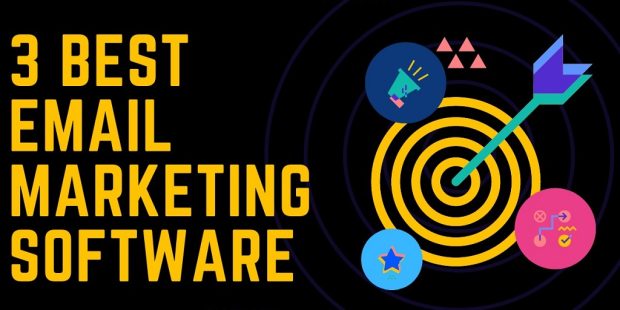
Email marketing remains one of the highest-ROI channels for businesses, creators, and marketers. Choosing a strong email service provider can mean the difference between campaigns that land in the inbox and campaigns that languish in spam. In this review, we explore three of the best email marketing platforms through the lens of Lookinglion—comparing their features, performance, pricing, and use cases. Our evaluation is based on criteria like usability, automation capabilities, analytics, integrations, support, and total value.
Why Choosing the Right Email Marketing Service Matters
Your choice of email tool affects deliverability, engagement, customer retention, and scalability. A weak platform might limit who you can send to, block advanced workflows, or hinder integration with your CRM or website. To get results, you want:
- Strong automation that can respond to user behavior.
- Accurate analytics and reporting to measure what works.
- Good deliverability (i.e. your emails land in Inboxes, not spam).
- Ease of use—so your team (or you) can iterate fast.
- Reliable support and a trustworthy provider background.
Review 1: Mailchimp
Overview
Mailchimp is one of the most widely known email marketing platforms. Founded in 2001, it has evolved into a broader marketing suite offering landing pages, CRM tools, social media posting, and more.
Key Features
- Drag-and-drop email builder, templates, and content blocks
- Marketing automation flows (opens, clicks, re-engagement) — though advanced automations come in paid tiers
- Landing pages, subscription forms, surveys integrated
- CRM features (contact profiles, tagging, behavioral tracking) in higher plans
- Large range of integrations (Shopify, WordPress, Zapier, etc.)
Pros
- Has a free tier to get started (with limitations)
- User-friendly for beginners, strong template library
- Good integration ecosystem
- All-in-one “marketing hub” appeal
Cons
- Pricing grows steeply as your subscriber base increases
- Some essential features (automation, support) are restricted in lower/free tiers
- They charge even for inactive contacts in some plans
- More advanced users sometimes outgrow its automation flexibility
Best For
Small to medium businesses, startups or solo marketers who want a broad tool that covers email, landing pages, and basic CRM in one place and are comfortable scaling plans as they grow.
Review 2: ConvertKit
Overview
ConvertKit (recently rebranded as “Kit” in some contexts) is known for its focus on creators, bloggers, coaches, and solopreneurs. It emphasizes simplicity, tagging-based subscriber management, and ease of monetizing content.
Key Features
- Tag- and segment-based workflows instead of rigid lists
- Visual automation builder with “if this, then that” logic
- Landing pages, sign-up forms, and integration for digital product sales
- Ability to send automated sequences, broadcast emails, and drip campaigns
- Monetization tools (paid newsletters, subscriptions, tips) in some plans
Pros
- Clean, intuitive interface (friendly for beginners)
- All features are often unlocked (regardless of plan size) — you pay by number of subscribers rather than feature tiers
- Built with creators in mind—monetization features integrated
- Good deliverability and focus on content-first flows
Cons
- Limited advanced automation options compared to full-scale tools
- Fewer design templates and “bells and whistles” than other platforms
- Less oriented toward CRM or heavy e-commerce workflows
- A/B testing is limited (often subject lines only) in some tiers
Best For
Content creators, bloggers, coaches and small creators who value simplicity, content-to-revenue flows, or want to focus on building an audience without wrestling with overly complex systems.
Review 3: ActiveCampaign
Overview
ActiveCampaign is a robust marketing automation platform that blends email marketing with CRM, advanced segmentation, deep automation, and behavioral targeting. It is especially popular among marketers who need sophisticated customer journeys.
Key Features
- Advanced, conditional automation workflows (triggers, branching logic)
- Built-in CRM and sales pipeline features to unify marketing and sales
- Dynamic content, behavior-based segmentation, lead scoring
- Robust A/B testing (subject lines, content, send times)
- Many automation templates and blueprints to kickstart workflows
Pros
- Highly flexible and scalable as business needs grow
- Tight integration between email, automation, and CRM
- Powerful segmentation and personalization capabilities
- Better suited to complex business models (e-commerce, B2B)
Cons
- Steeper learning curve, especially for beginners
- Cost can climb quickly for large lists or advanced features
- Overkill for simple newsletters or content-only operations
Best For
Growing businesses, e-commerce stores, agencies, or marketers who need end-to-end automation, CRM features, and highly customized journeys.
Comparison Table
| Feature | Mailchimp | ConvertKit | ActiveCampaign |
|---|---|---|---|
| Ease of Use | Very good / beginner friendly | Cleanest & simplest | Good, but steeper learning curve |
| Automation Power | Basic to moderate | Moderate (tag logic) | Advanced / conditional / branching |
| CRM / Sales Tools | Limited | Minimal | Built-in CRM, pipeline features |
| Templates & Design | Extensive library | Moderate / simpler designs | Many templates + dynamic content |
| A/B Testing | Yes (subject lines & content) in some plans | Often limited to subject lines | Full A/B testing on many elements |
| Pricing Model | Tiered by list size + feature caps | All features included; pay by subscriber count | Tiered, features vary by plan + list size |
| Best For | SMBs, all-in-one marketing hub | Creators, bloggers, solo businesses | Businesses needing complex automation & CRM |
Final Verdict
Each of these platforms offers real strengths—and the “best” choice depends on your goals, budget, and scale.
- Mailchimp is excellent if you want an all-in-one marketing tool with landing page and CRM features and you don’t mind paying more as you scale.
- ConvertKit is ideal if you’re a content creator or solopreneur who wants to focus on audience building, clean workflows, and monetization, without complicated setups.
- ActiveCampaign is the go-to when you need serious automation, segmentation, and CRM — especially for more mature businesses or growing operations.
My recommendation: try their free tiers or trial versions first. See which interface you enjoy working with and which features you’ll actually use in the next 6–12 months. Switching later is possible, but migrating lists, automations, and forms can be a pain.
Related Topic: Bamboo Paper for Fine Art and Calligraphy
FAQs
1. Which email marketing service is best for beginners?
ConvertKit is often recommended for beginners thanks to its clean interface and less steep learning curve. Mailchimp also works well for beginners due to its template library and broader marketing hub. ActiveCampaign is powerful but can be overwhelming at first.
2. What’s the most affordable email marketing tool for startups?
If your list is small (under a few thousand), Mailchimp’s free tier or ConvertKit’s entry plan is usually enough. ConvertKit’s model gives you access to all features; you only pay for the number of subscribers. ActiveCampaign is more expensive, especially for advanced tiers.
3. Which platform has the best automation features?
ActiveCampaign is the winner in automation — its ability to build branching workflows, behavior triggers, and CRM-based automations gives it a clear edge. ConvertKit offers good automation for simpler logic flows; Mailchimp offers solid automation in its mid to upper tiers.
4. Can I migrate from one service to another later?
Yes — most platforms support list import/export, and many have migration guides or migration services. However, automations, tags, and forms sometimes need manual re-creation, so plan for transition work.
5. Do all these services support WordPress integration?
Yes. Mailchimp, ConvertKit, and ActiveCampaign all offer plugins or integrations for WordPress, making it easy to embed forms, manage subscribers, and trigger automations from site activity.
If you like, I can also write a version optimized for SEO, or include installation steps, or compare with newer entrants. Just let me know.

